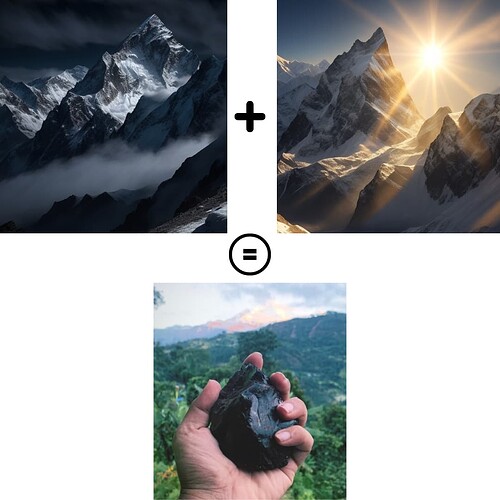In 2003, my mother underwent a life-threatening spinal cord surgery. With hereditary roots in Nepal, my father procured authentic shilajit for her post-surgery, leading to a remarkable recovery in spinal bone strength in last 20 years.
Witnessing nearly two decades of shilajit’s transformative effects within the family, a fitness enthusiast myself, aspired to extend these benefits to others dedicated to their health and fitness goals. And this is how Blue Trench Shilajit was born!
But, wait, what is Shilajit? How it is made? Lets understand in depth
Suppose, you start trekking up a tall mountain, like one that’s 7000 meters high, you’ll notice something interesting. Between around 1000 to 3000 meters, there are big trees, shrubs, and lots of green plants. As you climb higher, beyond 4000 to 4500 meters, there are fewer and fewer plants and trees. And when you reach above 5000 meters, you hardly see any plants at all. But why is this happening? When the sun rises, its rays are very powerful because they have a shorter distance to travel through the Earth’s air. This makes the sunlight really bright and intense, especially in the early morning. These strong rays hit the mountains and warm up the rocks and the ground. The heat from the sun makes the rocks expand, like when something stretches a little. As the day goes on and the sun gets higher, the rocks keep getting warmer and expanding. When the sun sets, the temperature drops, and the rocks start to cool down. This cooling makes the rocks contract, like when something shrinks a bit. The process of heating up and cooling down over a long time creates small cracks in the rocks. Think of these cracks like tiny spaces between the rock pieces. These cracks allow water and minerals from the mountains to go inside the rocks. The next morning, when the sun’s rays hit the rocks again, they warm up. This warmth helps release the water and minerals that got trapped in the cracks during the cooler nights. Over many, many years, this cycle of expanding, contracting, and releasing trapped substances happens again and again. It’s like a natural slow-cooking process that takes a really, really long time – even hundreds or thousands of years. Shilajit is the result of this process. Shilajit is formed from a mix of decomposed plants and shrubs that manage to survive at certain heights on the mountains. These plants don’t become big trees due to the harsh weather, but they still contribute to the formation of shilajit. Depending on the rocks and plants, the quality of shilajit can vary. If there are toxic elements like lead and mercury in the rocks, they can mix with shilajit and make it less safe, hence a “Shodhana” process is required. More on this, later. So, in a nutshell, shilajit is nature’s slow-cooked creation formed through a long process involving the sun’s rays, rocks, plants, and minerals in the high mountains.
This Shilajit, when consumed traditionally and scientifically, can offer remarkable health advantages, including enhanced energy with endurance, muscle recovery, improved bone health, enhanced immunity, reduced inflammation, increased fertility, alleviation of impotency in men, anti-aging properties, and better skin, among others. Both men and women can consume Shilajit.
Our intent in creating this topic is not to seek funding or promote our products. Rather, we believe that trust in Shilajit among individuals in our country has waned. To rebuild this trust, we aim to foster open discussions. We invite anyone with questions about Shilajit to engage with us, and we’ll be delighted to provide answers.
So, shoot your questions on Shilajit if you have any!
Cheers!
